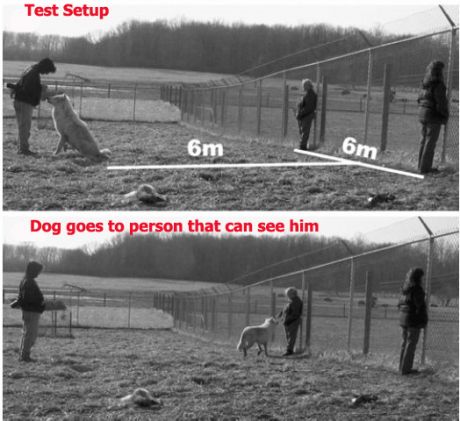Recent Research has shown that dogs won't ask you for treats if you have a bucket on your head.
Why would anyone have a bucket on her head?.
|
I've never put a bucket on my head, before, but in the interests of scientific inquiry, I found a not-too-dirty bucket in the garage, dumped the spiders out, put it on my head, and went to find Caitlin.
My research immediately showed that it's difficult to navigate with a bucket on your head. It's also difficult to find anything--let alone your dog--when you can't see,
My research immediately showed that it's difficult to navigate with a bucket on your head. It's also difficult to find anything--let alone your dog--when you can't see,
 |
| Caitlin in Bed |
I was pretty sure she was in the bedroom, so I felt my way along the walls until I got there. Caitlin gave a surprised "Woof!" and jumped backward off the bed.
I peeked out from under the bucket, just enough that she could see it was me. She leaped backwards again with another little "Woof!"
I took the bucket off my head. She stared at me--"Woof! Are you out of your mind?! Woof!"
When I put the bucket back on, she woofed and jumped backward again.
I was thinking about wearing the bucket to the dog park, but
1. I'd look silly..
2. Other people might think I looked silly.
3. The dogs might think I looked silly.
Besides, treats aren't allowed in the dog park, so I wouldn't be able to test the research anyway.
To be fair to the scientists, their research was not really about buckets. They were trying to answer the question: "Will a dog solicit treats from someone who can't see him?"
 |
| Where are the buckets mentioned in the study? |
Their answer was "no." The dogs did not go to people who had their backs turned. They didn't go to people who were reading or talking on their phones.
And they didn't go to people who had buckets on their heads.
Not even if those were the people who had the treats.
They didn't have Caitlin among their test subjects, or I think their conclusions might have been different.
Caitlin doesn't solicit treats (which aren't allowed in the dog park, anyway) but she does solicit people to kick her soccer ball for her. If she sees someone who has been co-operative in the past, she tries that person first. But if that doesn't work, she makes the rounds of the park, dropping the ball near each prospect.
If they look her way, she locks onto their eyes with hers--the border collie's classic sheep-intimidation tactic. Often, that's enough to command their obedience. If it isn't, she gives them a sharp, shrill bark and glares at them.
If she can't get the person to co-operate after several tries, she moves on to someone else, and then someone else until she finds one to do her bidding.
She goes up to people who have their backs turned, who are busy playing with their own dogs, who are reading or talking on the phone or changing their baby's diapers. She is relentless, persistent, and almost impossible to ignore.
I once saw a man actually leave his own dog in the small dog section and come to kick balls for Caitlin in the big dog section. One of my friends kept count for a while of the people she had "trained," but quit counting after 150 people.
Caitlin has never approached anyone with a bucket on his head. But, then, as far as I know, there has never been anyone with a bucket on his head in the park.
None of the dogs in the study approached anyone that they thought couldn't see them,
However, there were some wolves in the study, and they did.
Now there's a scary thought.






